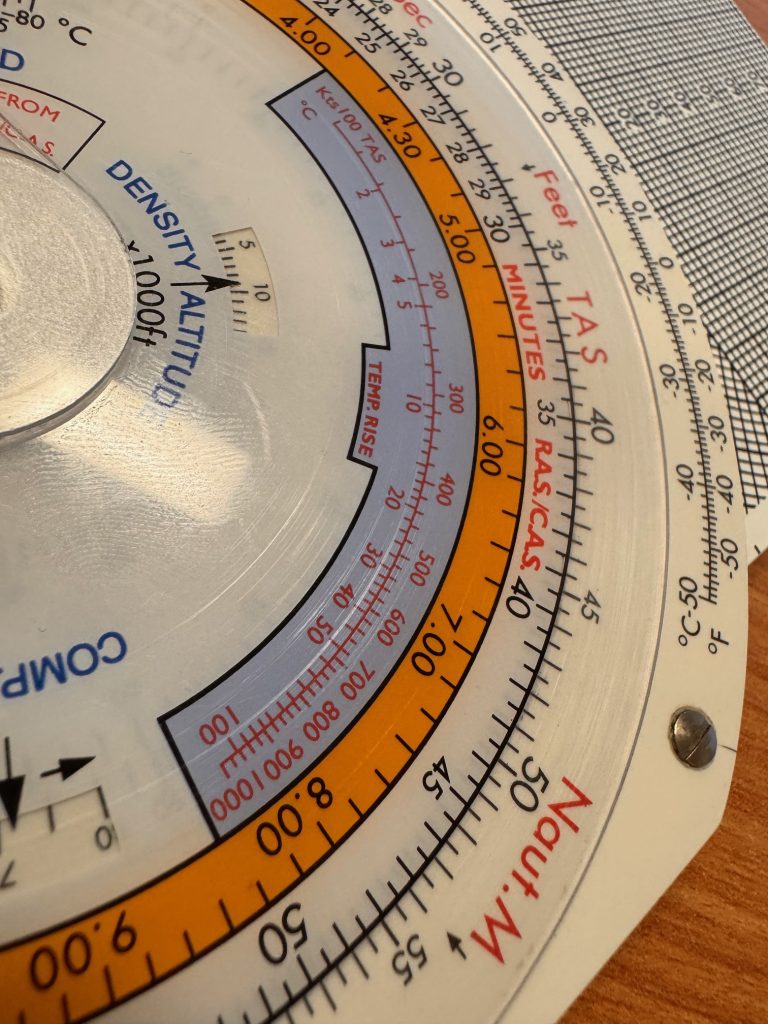Why I’m Glad I got a GNav Question wrong, and so should you be.
If we want pilots who can think, not just pass, then this is the course correction we’ve needed.
I recently completed the UK CAA General Navigation professional exam, often “feared” as one of the toughest of the ATPL syllabus and enough to send many a student professional pilot into cold sweats. Nervously I opened the results email as it landed from the CAA and gasped in horror.
After more than two decades as a professional navigator, a postgraduate diploma in applied navigation, and a stint as Head of Navigation for one of the fighting arms of the UK Ministry of Defence; someone who has charted transoceanic courses, mentored young officers on storm avoidance, and explained variation so many times I can recite WGS-84 facts in my sleep whilst calculating more great circle vertexes than I care to remember; I had this in the bag.
And yet, to my horror — I missed one.
Learning Objective 061.01.08.02.03, to be precise: calculating average ground speed during descent from TAS and wind velocity at various altitudes. A fair question, and one we might usually tackle over a coffee and a briefing map. But on that day, I fluffed it.

Perhaps I fat-fingered the calculator. Perhaps I was overconfident. But more importantly: I’m glad I got it wrong.
Because this wasn’t just a lesson in staying sharp — it was proof that the Civil Aviation Authority’s newly refreshed ATPL exam structure is finally doing what it should: testing knowledge, not memory.
The Rote Learning Trap: Why “Gaming the Exam” Has Put Safety at Risk
Let’s be brutally honest: for too long, ATPL theory, particularly in subjects like General Navigation, has been something of a cheat code. A vast cottage industry of question banks and memory drills has allowed thousands of candidates to pass without ever fully and truly understanding what they were doing.
Controversial, and perhaps many will be angry at me for suggesting so. But my experience through the professional pilot exams has shown me just that. For every committed student who works hard to nail the theory, there are those who think that “banking it all the way” is the key to success. Whether I think calculating a magnetic course to an NDB from a position on a polar stereographic chart is a useful skill or not for today’s INS-gilded pilot, I’ll keep to myself. That said, many students could tell you that the “answer is C”, without being able to explain what, or why.
It got so bad that the UK’s Chief Theoretical Knowledge Instructors (CTKIs) formally raised the issue at their November 2024 meeting. Their concerns were clear: students were passing exams by rote, not understanding. That’s dangerous. Not just for the students, but for the future of professional aviation.
Enter the CAA’s Winter Question Task, a strategic overhaul of the question bank, starting in March 2025 and set to reshape how all ATPL theory exams are delivered.
New Format, New Standards: Type-in Answers and What They Mean for CPL/ATPL students
The updated system introduces new question formats across all subjects:
• Type-in answers – no options, just your raw answer. Know it or don’t.
• Inline (cloze) questions – test layered understanding.
• Multi-select questions – require critical discrimination, not gut instinct.
• Reduced reliance on MCQs – which previously encouraged pattern spotting and lucky guessing.
The emphasis now? Understanding, application, precision.
Which brings me back to my error. I wasn’t misled by four options or tricked by clever wording. I simply didn’t execute the calculation properly. The exam didn’t hand me cues; it demanded I know. That’s the system working exactly as intended.
The Role of ATOs: From Content Delivery to Competence Development
This shift presents a challenge, and a responsibility, for ATOs.
Too many training providers have become dependent on drilling question banks. Their internal assessments mirror MCQ-heavy formats, reinforcing shallow learning and surface-level comprehension. Students learn to pass, not to understand, the “last 300 becomes the bastion of learning”.
Now, with type-in questions, there’s nowhere to hide. If a student doesn’t grasp the fundamentals, if they’ve never mentally estimated a descent profile from varying winds, they will be found out.
Good. That’s how aviation training should be.
It is incumbent on every TKI and ATO to teach not just what the syllabus says, but why it matters — and how to apply it under pressure. Classroom sessions must become more interactive. Mental models and practical reasoning must take centre stage. Because theory, when stripped of application, becomes a liability.
Dear Student Pilots: This Is Your First Job Interview
Let’s turn to the candidate perspective, especially those aiming for airline careers.
ATPL theory isn’t just a box to tick. It’s the first real test of how you study, how you solve problems, and how you manage high cognitive load under time pressure.
Airlines know this.
Some will even screen CVs based on TK scores. Not because high marks guarantee a good pilot, they don’t, but because they indicate the mindset behind the achievement. Were you methodical? Did you study deeply? Can you apply knowledge when it matters? Or did you memorise your way through it?
When you’re sweating in a multi-crew sim check, faced with real-world crosswinds, a fuel discrepancy, and a reroute in deteriorating weather, rote recall won’t help you. But understanding will.
The new exam structure helps identify who will thrive in those moments. As a pilot, you are paid not for your ability to recite definitions, but for your ability to think, under stress, in time-critical situations, with lives on the line.
A Final Word From a Humbled Navigator
I didn’t write this piece to pat myself on the back for “smashing” GNav, nor to bemoan the one I missed. I wrote it because that mistake reminded me, starkly, that true mastery means always being open to learning, to improvement, and to challenge.
This system now reflects the values we say we want in aviation: rigour, professionalism, and safety through understanding.
So, if you’re preparing for your exams: embrace the difficulty. Seek clarity, not just recall. Understand the triangle of velocities not because it’s examinable, but because it’s a tool that will one day keep you safe.
And if, like me, you get one (or more) wrong, good. That means the system is finally doing its job.
This article was published in https://www.ftnonline.co.uk/ August 2025, written by @checksd

Agree 100%. As a TKI, I expect my students to learn the knowledge so they can apply it. I actually had a student today ask me why we have to learn about electrics, as all we have to do is push a button. I said, when it doesn’t work, and you have no power, how are you going fix it, you have no flight engineer to help you, you are it! Made him think about things a bit.
Thank you Peter. It was interesting as I went through the process to see the volume of students who knew the answer to question X is Y, but couldn’t explain the basics principles that underpin the answer. “Bank all the way”, a familiar refrain will, moving forward, return all the way to the bank, as people start to fail the exams. Study hard, learn and succeed.